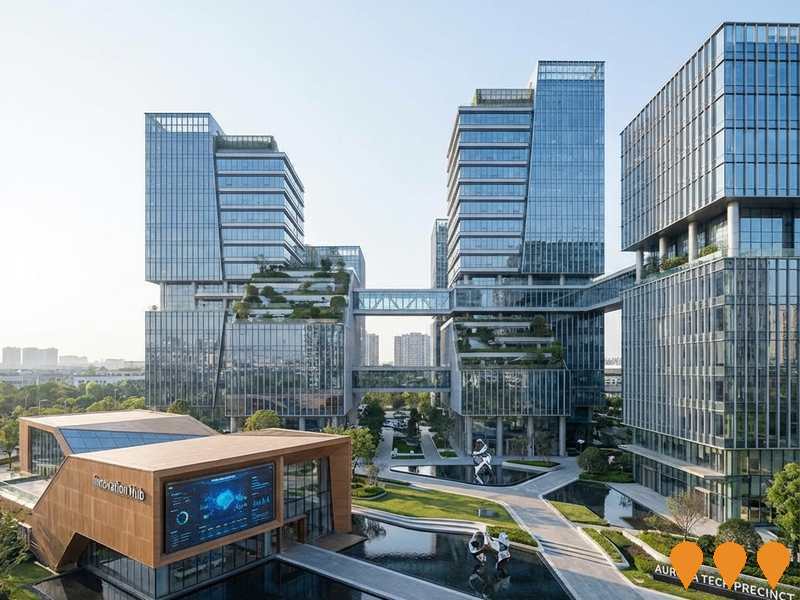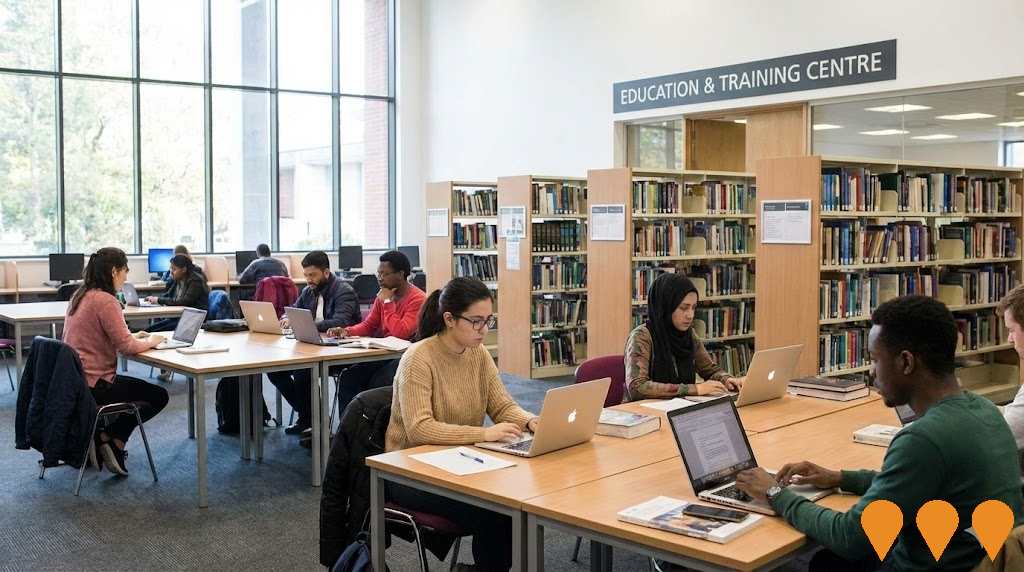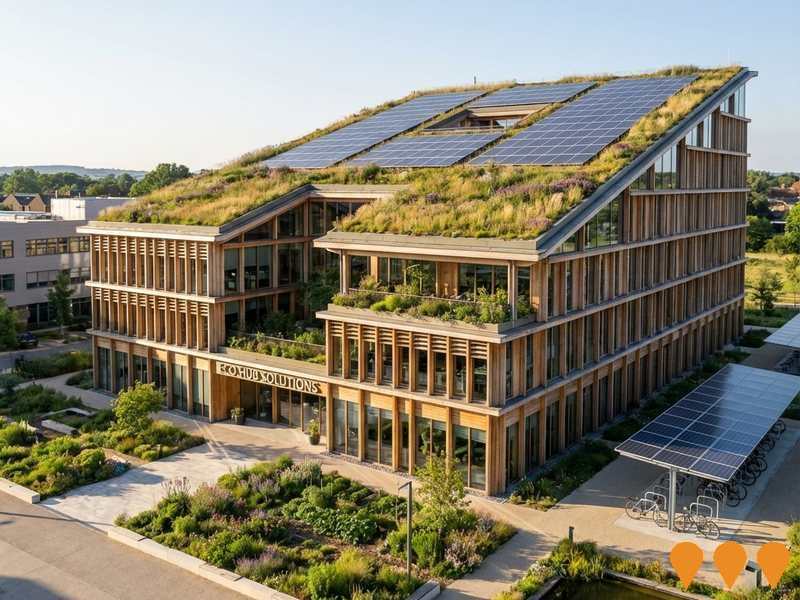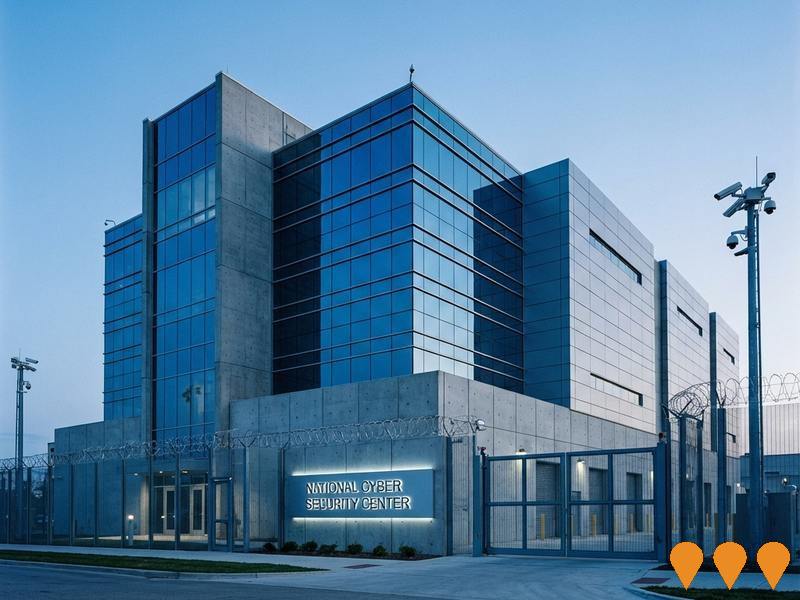Chart Color Schemes
est. as @ -- *
ABS ERP | -- people | --
2021 Census | -- people
Sales Activity
Curious about local property values? Filter the chart to assess the volume and appreciation (including resales) trends and regional comparisons, or scroll to the map below view this information at an individual property level.
Find a Recent Sale
Sales Detail
Population
Population growth drivers in Murwillumbah are strong compared to national averages based on AreaSearch's ranking of recent, and medium to long-term trends
Murwillumbah's population was approximately 9,568 as of August 2025. This figure represents an increase of 67 people since the 2021 Census, which recorded a population of 9,501. The growth is inferred from ABS estimates: Murwillumbah had an estimated resident population of 9,544 in June 2024 and gained 77 validated new addresses since the Census date. This results in a population density ratio of 393 persons per square kilometer. Murwillumbah's growth rate of 0.7% since the census is within 2.5 percentage points of the SA4 region's growth rate of 3.2%. Overseas migration contributed approximately 83.3% of overall population gains during recent periods.
AreaSearch uses ABS/Geoscience Australia projections for each SA2 area, released in 2024 with a base year of 2022. For areas not covered by this data, AreaSearch utilises NSW State Government's SA2 level projections released in 2022 with a base year of 2021. Growth rates by age group are applied to all areas for years 2032 to 2041. By 2041, Murwillumbah is expected to increase by approximately 928 persons, reflecting an 8.6% total increase over the 17-year period, which is just below the median growth rate of non-metropolitan areas nationally.
Frequently Asked Questions - Population
Development
The level of residential development activity in Murwillumbah is very low in comparison to the average area assessed nationally by AreaSearch
Murwillumbah has seen approximately 16 new homes approved annually. Between FY21-FY25, 81 homes were approved, with 2 more approved in FY26 so far. The population decline in recent years suggests that the new supply has likely kept pace with demand, offering buyers good choice.
New dwellings are developed at an average expected construction cost of $599,000, moderately above regional levels, indicating a focus on quality construction. In FY26, $12.1 million worth of commercial approvals have been registered, showing moderate levels of commercial development compared to the rest of NSW. Murwillumbah has around half the rate of new dwelling approvals per person and ranks among the 14th percentile nationally for housing choices, suggesting limited options for buyers and supporting demand for existing homes. This is below average nationally, reflecting the area's maturity and possible planning constraints.
New building activity comprises 92% standalone homes and 8% medium-high density housing, maintaining Murwillumbah's traditional low-density character with a focus on family homes appealing to those seeking space. The estimated population per dwelling approval is 1150 people, reflecting its quiet development environment. Population forecasts indicate Murwillumbah will gain 820 residents by 2041. If current development rates continue, housing supply may not keep pace with population growth, potentially increasing competition among buyers and supporting stronger price growth.
Frequently Asked Questions - Development
Infrastructure
Murwillumbah has emerging levels of nearby infrastructure activity, ranking in the 33rdth percentile nationally
Changes to local infrastructure significantly impact an area's performance. AreaSearch has identified seven projects likely affecting this region. Notable projects include Murwillumbah Depot, Animal Pound and Rehoming Centre, Industry Central Land Swap, and Quarry Business Park. The following list details those most relevant:.
Professional plan users can use the search below to filter and access additional projects.
INFRASTRUCTURE SEARCH
 Denotes AI-based impression for illustrative purposes only, not to be taken as definitive under any circumstances. Please follow links and conduct other investigations from the project's source for actual imagery. Developers and project owners wishing us to use original imagery please Contact Us and we will do so.
Denotes AI-based impression for illustrative purposes only, not to be taken as definitive under any circumstances. Please follow links and conduct other investigations from the project's source for actual imagery. Developers and project owners wishing us to use original imagery please Contact Us and we will do so.
Frequently Asked Questions - Infrastructure
Queensland Energy Roadmap Infrastructure
The Queensland Energy Roadmap 2025 is the State Government's strategic plan to deliver affordable, reliable, and sustainable energy. Replaces the former Energy and Jobs Plan, focusing on extending the life of state-owned coal assets, a $1.6 billion Electricity Maintenance Guarantee, and the $400 million Queensland Energy Investment Fund. Key infrastructure includes the CopperString transmission line and new gas-fired generation, while the Pioneer-Burdekin Pumped Hydro project has been cancelled in favor of smaller storage options.
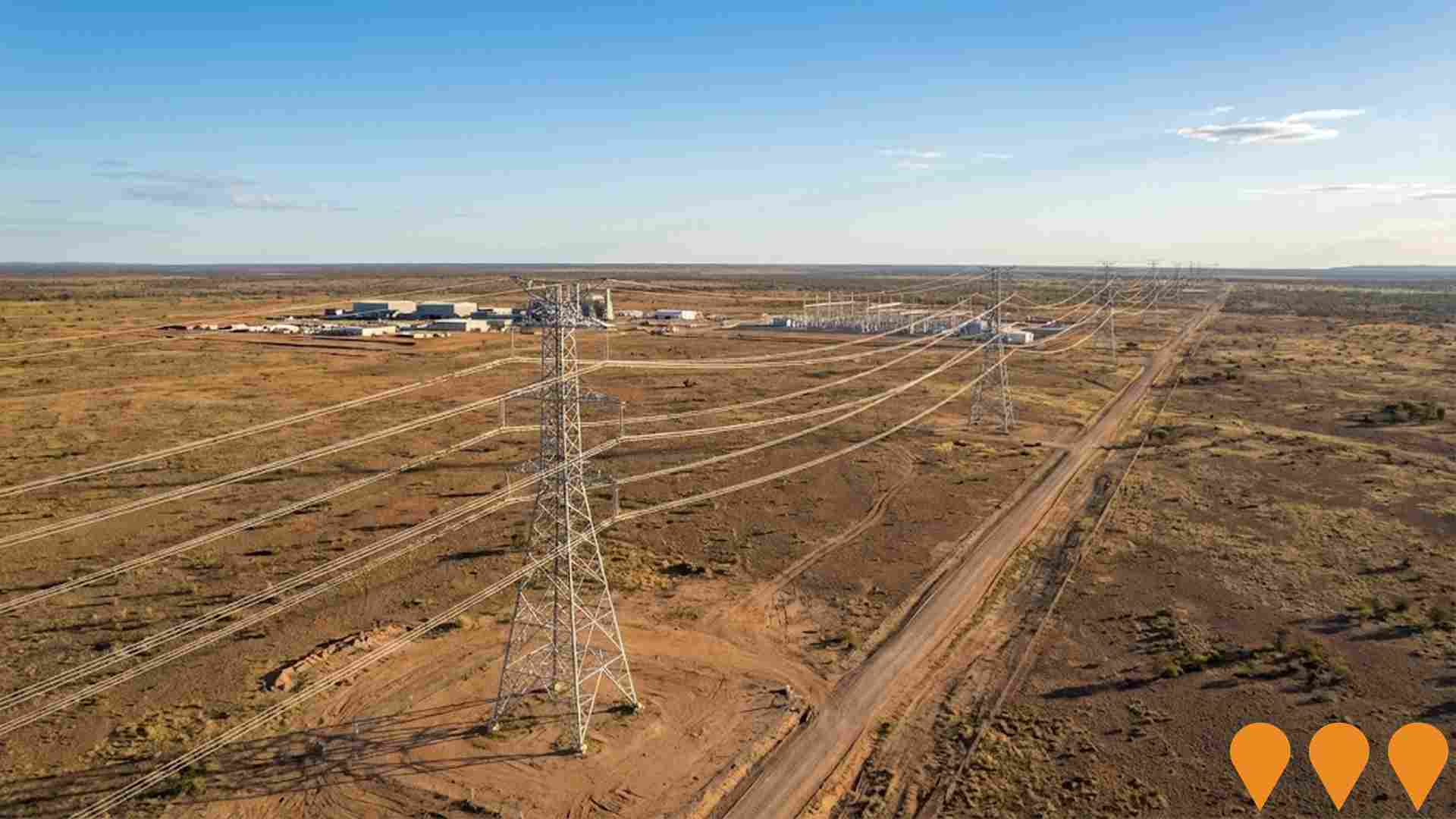
Queensland Energy and Jobs Plan
The Queensland Energy and Jobs Plan, initially a comprehensive plan for renewable energy and job creation, has been superseded by the Queensland Energy Roadmap 2025 by the new government (October 2025). The Roadmap focuses on energy affordability, reliability, and sustainability by leveraging existing coal and gas assets, increasing private sector investment in renewables and storage (targeting 6.8 GW of wind/solar and 3.8 GW of storage by 2030), and developing a new Regional Energy Hubs framework to replace Renewable Energy Zones. The initial $62 billion investment pipeline is now primarily focused on implementing the new Roadmap's priorities, including an estimated $26 billion in reduced energy system costs compared to the previous plan. The foundational legislation is the Energy Roadmap Amendment Bill 2025, which is currently before Parliament and expected to pass by December 2025, formally repealing the previous renewable energy targets. Key infrastructure projects like CopperString's Eastern Link are still progressing. The overall project is in the planning and legislative amendment phase under the new policy.
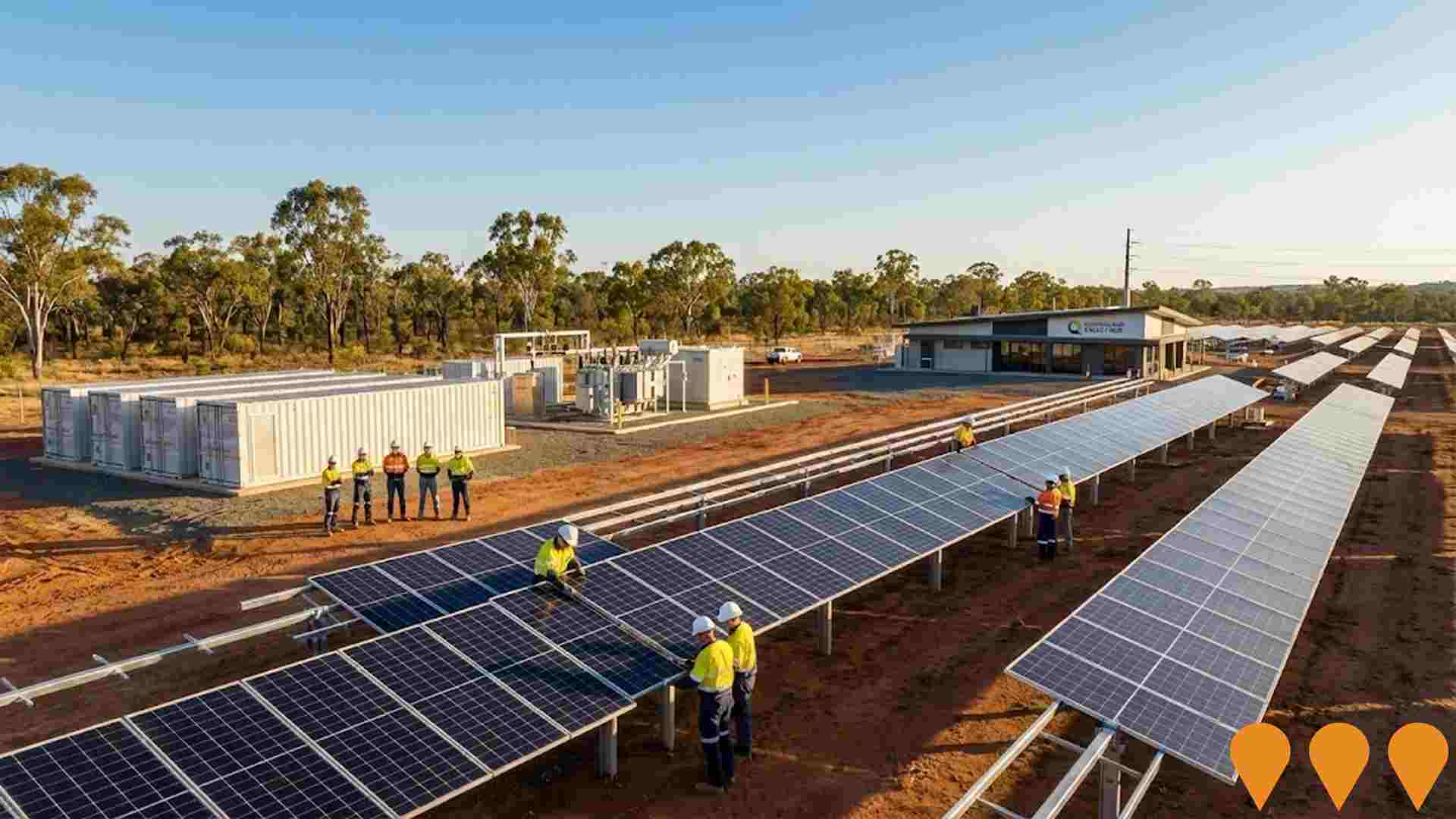
Brisbane 2032 Olympic and Paralympic Games Infrastructure Program
The $7.1 billion infrastructure program for the Brisbane 2032 Olympic and Paralympic Games includes a new ~60,000-seat main stadium at Victoria Park (hosting opening/closing ceremonies and athletics), a new Brisbane Arena (Roma Street or alternate location), venue upgrades to QSAC and Suncorp Stadium, new and upgraded aquatic centres, athletes' villages, and supporting transport improvements across South East Queensland. The program emphasises existing venues where possible with targeted new builds for legacy benefit.

Building Future Hospitals Program
Queensland's flagship hospital infrastructure program delivering over 2,600 new and refurbished public hospital beds by 2031-32. Includes major expansions at Ipswich Hospital (Stage 2), Logan Hospital, Princess Alexandra Hospital, Townsville University Hospital, Gold Coast University Hospital and multiple new satellite hospitals and community health centres.
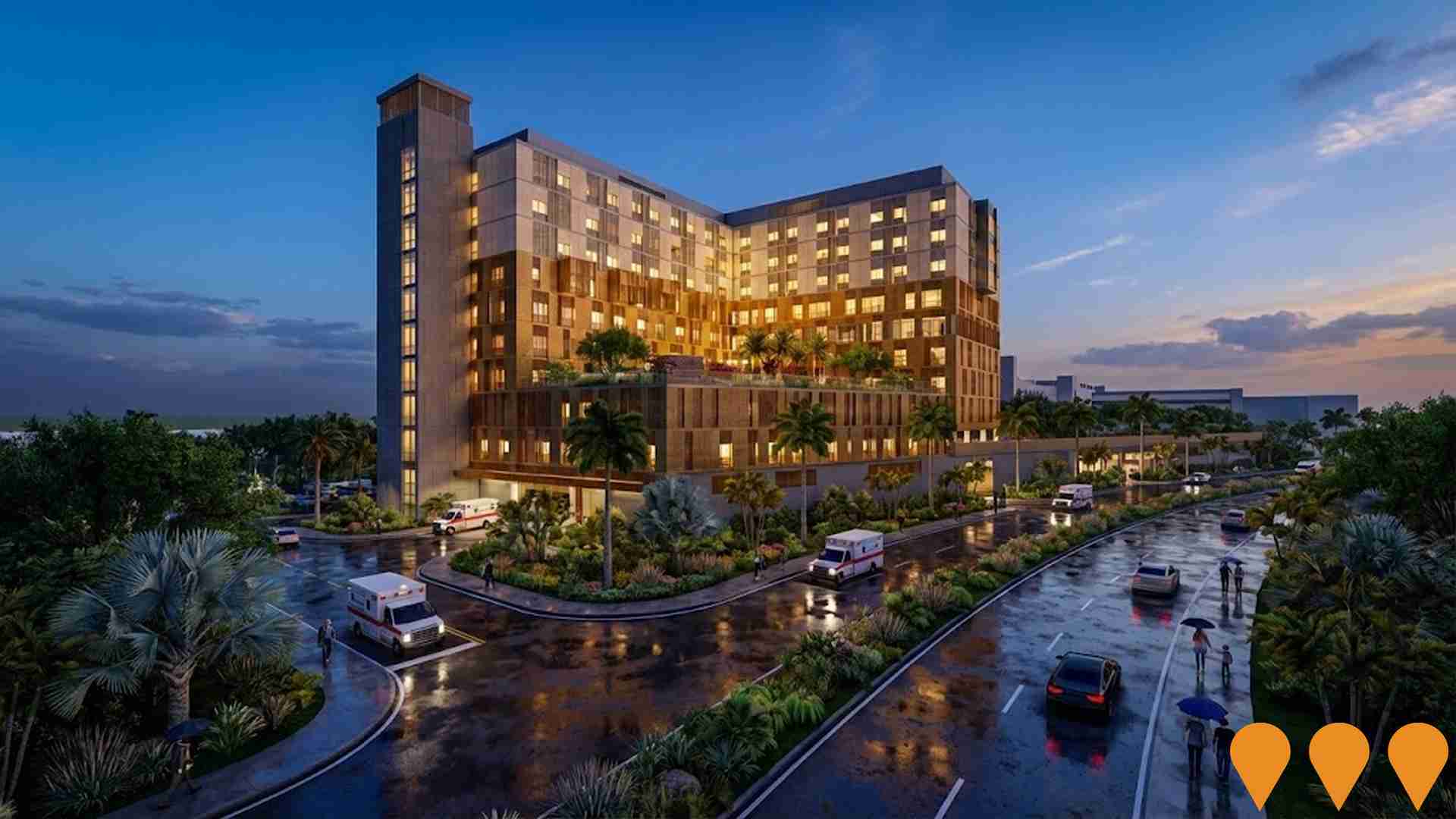
Clarrie Hall Dam Raise
Raising the Clarrie Hall Dam wall by 8.5 metres to increase storage capacity from 16,000 ML to 42,300 ML, providing long-term water security for Tweed Shire to beyond 2050 and improving flood mitigation downstream.

Industry Central Land Swap
A strategic land swap initiative by Tweed Shire Council to relocate businesses from flood-prone areas in South Murwillumbah to flood-free industrial land at Industry Central, enhancing economic resilience against future floods. Infrastructure works completed in March 2025, with businesses now preparing to build and relocate.

Northern Rivers Rail Trail - Tweed Section
A 24 km shared-use rail trail from Murwillumbah to Crabbes Creek along the former Casino-Murwillumbah railway corridor (Tweed Section). Part of the broader 132-134 km Northern Rivers Rail Trail. Features 18 restored railway bridges, 2 tunnels, accessible paths, and scenic rural views. Opened March 2023, developed by Tweed Shire Council to boost tourism, recreation, and the local economy. High usage has exceeded expectations with significant positive economic impact.

Animal Pound and Rehoming Centre
A state-of-the-art facility for impounding, sheltering, and rehoming animals, including veterinary care, animal enrichment spaces, administrative hub for Rangers and not-for-profit partners, housing up to 80 companion animals (40 dogs and 40 cats), and storage for impounded vehicles.

Employment
The employment landscape in Murwillumbah presents a mixed picture: unemployment remains low at 3.8%, yet recent job losses have affected its comparative national standing
Murwillumbah has a skilled workforce with essential services sectors well represented. The unemployment rate was 3.8% as of June 2025.
There were 4,028 residents employed at this time, with an unemployment rate of 0.1% higher than the Rest of NSW's rate of 3.7%. Workforce participation in Murwillumbah was lower at 51.3%, compared to 56.4% in the Rest of NSW. The leading employment industries among residents were health care & social assistance, retail trade, and education & training, while agriculture, forestry & fishing employed only 2.9% of local workers, below the Rest of NSW's 5.3%.
Many residents appear to commute elsewhere for work based on Census data. Between June 2024 and June 2025, the labour force decreased by 4.8%, employment declined by 3.7%, leading to a fall in unemployment rate by 1.0 percentage points. In contrast, across the Rest of NSW, employment fell by 0.1%, labour force expanded by 0.3%, and unemployment rose by 0.4 percentage points during this period. According to Jobs and Skills Australia's national employment forecasts from May 2025, national employment is projected to expand by 6.6% over five years and 13.7% over ten years. Applying these projections to Murwillumbah's employment mix suggests local growth of approximately 6.5% over five years and 13.5% over ten years.
Frequently Asked Questions - Employment
Income
Income metrics place the area in the bottom 10% of locations nationally according to AreaSearch analysis
Murwillumbah's median income among taxpayers was $40,717 in financial year 2022. The average income stood at $51,177 during the same period. This compares to figures for Rest of NSW which were $49,459 and $62,998 respectively. By September 2025, current estimates project median income in Murwillumbah to be approximately $45,851 and average income to reach around $57,630 based on Wage Price Index growth of 12.61% since financial year 2022. Census data shows that household, family, and personal incomes in Murwillumbah all fall between the 10th and 11th percentiles nationally. In terms of income distribution, 28.0% of locals (2,679 people) earn within the $400 - $799 range, unlike surrounding regions where 29.9% fall within the $1,500 - $2,999 bracket. Housing affordability pressures are severe in Murwillumbah, with only 79.3% of income remaining after housing costs, ranking at the 9th percentile nationally.
Frequently Asked Questions - Income
Housing
Murwillumbah is characterized by a predominantly suburban housing profile, with a higher proportion of rental properties than the broader region
Murwillumbah's dwelling structures, as per the latest Census, consisted of 78.9% houses and 21.1% other dwellings (semi-detached, apartments, 'other' dwellings). In comparison, Non-Metro NSW had 66.3% houses and 33.8% other dwellings. Home ownership in Murwillumbah was at 36.6%, with mortgaged dwellings at 32.6% and rented ones at 30.8%. The median monthly mortgage repayment was $1,733, lower than Non-Metro NSW's average of $1,872. The median weekly rent in Murwillumbah was $350, compared to Non-Metro NSW's $400. Nationally, Murwillumbah's mortgage repayments were below the Australian average of $1,863, and rents were less than the national figure of $375.
Frequently Asked Questions - Housing
Household Composition
Murwillumbah features high concentrations of lone person households, with a fairly typical median household size
Family households account for 65.9% of all households, including 24.1% couples with children, 24.6% couples without children, and 16.2% single parent families. Non-family households make up the remaining 34.1%, with lone person households at 31.0% and group households comprising 3.1% of the total. The median household size is 2.4 people, which matches the average for the Rest of NSW.
Frequently Asked Questions - Households
Local Schools & Education
Educational attainment in Murwillumbah aligns closely with national averages, showing typical qualification patterns and performance metrics
The area's university qualification rate is 19.6%, significantly lower than the NSW average of 32.2%. Bachelor degrees are most common at 13.8%, followed by postgraduate qualifications (3.3%) and graduate diplomas (2.5%). Vocational credentials are held by 40.9% of residents aged 15+, with advanced diplomas at 10.4% and certificates at 30.5%. Educational participation is high, with 30.1% currently enrolled in formal education: 11.3% in primary, 9.1% in secondary, and 3.3% in tertiary education.
There are 10 schools operating in Murwillumbah, educating approximately 2,937 students, with typical Australian school conditions (ICSEA: 1012) and balanced educational opportunities. The schools include 5 primary, 3 secondary, and 2 K-12 schools. The area functions as an education hub with 30.7 school places per 100 residents, attracting students from surrounding communities. Note: where schools show 'n/a' for enrolments, please refer to the parent campus.
Frequently Asked Questions - Education
Schools Detail
Nearby Services & Amenities
Transport
Transport servicing is moderate compared to other areas nationally based on assessment of service frequency, route connectivity and accessibility
Murwillumbah has 218 active public transport stops. These are served by a mix of buses along 67 different routes. Together, these provide 949 weekly passenger trips.
The accessibility of transport is rated as excellent, with residents typically located 120 meters from the nearest stop. On average, there are 135 trips per day across all routes, which equates to approximately four weekly trips per individual stop.
Frequently Asked Questions - Transport
Transport Stops Detail
Health
Health performance in Murwillumbah is well below average with prevalence of common health conditions notable across both younger and older age cohorts
Murwillumbah faces significant health challenges, as indicated by health data. Both younger and older age groups have a notable prevalence of common health conditions. Only approximately 46% (~4,439 people) of the total population has private health cover, compared to 49.3% across the Rest of NSW, which is lower than the national average of 55.3%.
Mental health issues and arthritis are the most prevalent medical conditions in the area, affecting 10.5 and 10.0% of residents respectively. However, 62.3% of residents declare themselves completely clear of medical ailments, compared to 64.2% across the Rest of NSW. The area has 24.7% (2,361 people) of residents aged 65 and over, which is lower than the 26.1% in the Rest of NSW. Despite this, health outcomes among seniors present some challenges, performing even better than the general population in health metrics.
Frequently Asked Questions - Health
Cultural Diversity
Murwillumbah is considerably less culturally diverse than average when assessed alongside AreaSearch's national rankings for language and cultural background related metrics
Murwillumbah's cultural diversity was found to be below average, with 89.6% of its population being citizens, 86.5% born in Australia, and 94.8% speaking English only at home. Christianity was the main religion in Murwillumbah, comprising 48.4% of people there. However, the most notable overrepresentation was seen in the 'Other' category, which made up 1.6% of Murwillumbah's population compared to 0.8% across the rest of NSW.
In terms of ancestry, the top three represented groups were English at 32.0%, Australian at 28.3%, and Irish at 11.1%. There were also notable differences in the representation of certain ethnic groups: French was overrepresented at 0.7% compared to 0.5% regionally, Scottish at 9.0% versus 8.7%, and Australian Aboriginal at 2.6% compared to 3.0%.
Frequently Asked Questions - Diversity
Age
Murwillumbah hosts an older demographic, ranking in the top quartile nationwide
Murwillumbah's median age is 46, which is higher than Rest of NSW's figure of 43 and significantly greater than Australia's national norm of 38. The age group 45-54 has a strong representation at 12.8%, compared to Rest of NSW, while the 25-34 cohort is less prevalent at 10.0%. According to post-2021 Census data, the 25 to 34 age group grew from 8.6% to 10.0% of Murwillumbah's population, and the 15 to 24 cohort increased from 10.1% to 11.4%. Conversely, the 55 to 64 cohort declined from 14.1% to 12.8%. By 2041, Murwillumbah is projected to experience notable shifts in its age composition. The 25 to 34 group is expected to grow by 27%, adding 254 people and reaching a total of 1,207 from the previous count of 952. Meanwhile, the 5-14 and 55-64 cohorts are anticipated to experience population declines.

